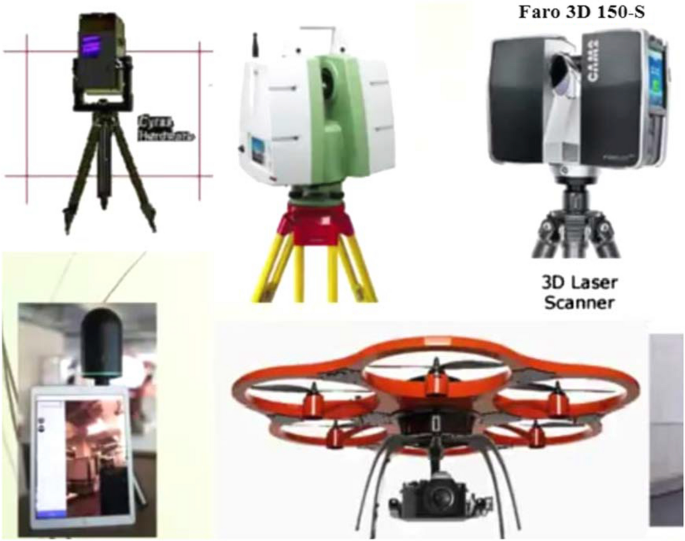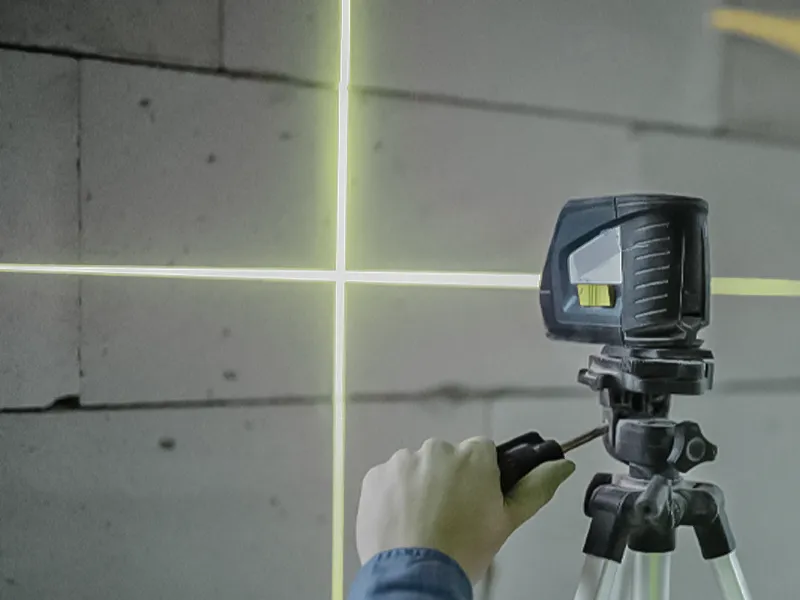Why 3D Scanning Enhances BIM Integration
Wiki Article
Discovering the Applications of 3D Laser Scanning in Archaeology and Cultural Heritage Conservation
The assimilation of 3D laser scanning modern technology in archaeology and social heritage conservation notes a substantial innovation in just how historic websites and artefacts are recorded and analyzed. This non-invasive approach offers exact spatial information, revealing complex details that were formerly tough to capture. As the applications of this innovation remain to progress, various implications for documentation, conservation, and education and learning emerge, welcoming additional exploration into its transformative influence on the area.Comprehending 3D Laser Scanning Modern Technology
3D laser scanning technology has actually changed the area of archaeology by giving specific and in-depth spatial information. This sophisticated modern technology uses laser beam of lights to catch millions of data factors from an object or site, developing an extremely exact three-dimensional depiction (3D Scanning). The resulting factor clouds can reveal intricate details of historical sites, frameworks, and artifacts that may be undetectable to the naked eyeUsing this innovation, archaeologists can record the precise measurements, shapes, and placements of items with extraordinary precision. This approach decreases the danger of human mistake and removes the need for extensive hands-on measurements. The information collected can be evaluated and shared quickly, assisting in partnership amongst scientists. By integrating 3D laser scanning with GIS and various other digital devices, excavators improve their ability to envision and analyze historical contexts, leading to much deeper insights into ancient societies and atmospheres.
Enhancing Archaeological Paperwork
3D laser scanning considerably boosts archaeological documents via its capability to develop accurate website maps. This modern technology assists in detailed artifact evaluation, offering insights that standard methods might overlook. Furthermore, it ensures the conservation of contextual information, which is crucial for comprehending the partnerships within historical sites.Precise Site Mapping
While typical mapping approaches typically fight with capturing the detailed details of historical sites, progressed laser scanning technology supplies a cutting edge approach to exact site mapping. This approach allows excavators to create extremely described and exact three-dimensional depictions of websites, showcasing topographical variants and structural attributes with exceptional fidelity. The capability to capture millions of information points in an issue of mins enables thorough documentation, which can be easily upgraded and shared amongst scientists. Furthermore, laser scanning helps with the dimension of intricate geometries that would certainly be hard to evaluate using conventional devices. As an outcome, this modern technology improves the accuracy of website maps, contributing substantially to the preservation and understanding of cultural heritage resources.Detailed Artifact Evaluation
Laser scanning technology greatly enhances the analysis of archaeological artefacts, providing scientists with extraordinary detail and accuracy. This approach records detailed surface textures, measurements, and features that standard paperwork methods may neglect. By producing high-resolution 3D versions, scholars can closely analyze artefacts without the threat of damage fundamental in physical handling. This precision permits far better relative studies, making it possible for specialists to determine production methods, stylistic variants, and potential social importance. Furthermore, the ability to control and picture information in 3 dimensions promotes a much deeper understanding of artifact capability and use. On the whole, laser scanning promotes an extra complete strategy to historical documentation, ensuring that crucial information about artefacts is protected for future study and education.Conservation of Contextual Information
Protecting contextual information is crucial for improving archaeological documentation, as it assures that findings are understood within their original environmental and cultural frameworks. 3D laser scanning innovation greatly adds to this conservation effort by capturing detailed spatial connections amongst artefacts, structures, and their atmospheres. By generating specific 3D versions, excavators can document the precise locations and positionings of items in situ, assisting in a thorough understanding of their context. This innovation enables researchers to revisit and examine websites long after excavation, preserving the integrity of contextual information. On top of that, electronic documents created through scanning can be shared worldwide, cultivating joint research and public engagement. Eventually, maintaining contextual information via 3D laser scanning enhances archaeological narratives and advertises an extra extensive gratitude of social heritage.Preservation of Cultural Heritage Sites
As improvements in innovation continue to progress, the conservation of social heritage sites has actually come to be significantly reliant on innovative approaches such as 3D laser scanning. This innovation permits the thorough documents of landscapes, structures, and artifacts, catching their specific dimensions and spatial partnerships in a non-invasive way. By producing high-resolution 3D models, scientists can check and evaluate wear and tear patterns, making it possible for proactive preservation strategies.Additionally, 3D laser scanning promotes the sharing of in-depth site information with the global area, advertising collaboration additional reading among chroniclers, excavators, and preservationists. These versions offer as invaluable resources for education and public involvement, increasing awareness of cultural heritage problems. The electronic documents produced can guard against loss due to ecological elements, criminal damage, or disregard. Generally, 3D laser scanning stands for a transformative strategy to the preservation of social heritage, making certain that these websites can be studied and valued by future generations.

Restoration and Reconstruction Efforts
The thorough paperwork accomplished through 3D laser scanning plays a significant function in repair and restoration efforts within archaeology. This innovation supplies specific measurements and high-resolution images, enabling accurate digital designs of frameworks and artefacts. These versions offer as necessary referrals throughout reconstruction procedures, enabling archaeologists to make and visualize the original design educated choices concerning materials and strategies required for repair work.In addition, 3D laser scanning helps with the repair of harmed or lost elements by producing detailed replicas. This process help in making certain that reconstructions preserve historical stability while likewise permitting ingenious methods to bring back sites. The capability to analyze you can try these out wear patterns and architectural weak points via scanned data enhances understanding of a site's historic context and its use gradually. Consequently, 3D laser scanning not just protects the physical aspects of social heritage but additionally improves the story of history, assisting future reconstruction ventures.
Educational and Research Opportunities
The combination of 3D laser scanning in archaeology opens considerable educational and study chances. Academic collaborations can boost the understanding of ancient sites, while specialized training workshops equip specialists with important skills for using this innovation. Together, these campaigns promote a richer engagement with historical methods and approaches.Academic Collaborations in Archaeology
Collaborative initiatives in archaeology have actually become increasingly vital for advancing both educational and research study chances. By promoting collaborations amongst colleges, research organizations, and social heritage organizations, these cooperations facilitate the exchange of knowledge and resources, enhancing the top quality of historical research studies. Joint tasks usually take advantage of diverse proficiency, permitting extensive analyses and ingenious approaches, specifically in the application of modern technologies like 3D laser scanning. Such cooperations likewise advertise interdisciplinary techniques, involving areas such as background, conservation, and location scientific research. Furthermore, academic collaborations commonly lead to the growth of new curricula and training programs, preparing the future generation of excavators to properly make use of innovative modern technologies in their work. Ultimately, these partnerships add to the preservation and understanding of social heritage.Training Workshops for Professionals
Training workshops for experts in archaeology are significantly vital for improving abilities in the application of innovative innovations such as 3D laser scanning. These workshops supply individuals with hands-on experience in making use of innovative devices and software program, promoting a deeper understanding of information capture and evaluation procedures. Experts can learn to create exact digital versions of historical sites, which substantially help in documents and YOURURL.com conservation initiatives. In addition, these training sessions commonly consist of discussions on best techniques and study, promoting knowledge exchange amongst participants. By investing in continual education and learning, professionals can stay upgraded on evolving modern technologies, eventually boosting the effectiveness of their research study and social heritage conservation initiatives. This commitment to skill enhancement is essential for advancing the area of archaeology.Future Patterns in 3D Laser Scanning for Archaeology
As advancements in innovation remain to reshape different areas, the future of 3D laser scanning in archaeology assures to boost both the precision and effectiveness of website documents and analysis. Emerging trends suggest an expanding integration of expert system and artificial intelligence, helping with automated information handling and interpretation. This evolution will enable archaeologists to evaluate intricate datasets quicker, causing faster insights into historic contexts.Moreover, the integration of drone technology with 3D laser scanning is likely to expand, making it possible for extensive aerial surveys of historical sites that are challenging to accessibility. The boosting affordability of scanning devices will democratize access, empowering smaller sized establishments and independent researchers to utilize these tools successfully. Furthermore, developments in virtual truth and increased fact will make it possible for immersive experiences for public interaction and education, making archaeological findings a lot more easily accessible and interactive. These trends jointly indicate a transformative future for archaeology, boosting preservation initiatives and increasing the discipline's outreach.
Often Asked Inquiries
Just How Much Does 3D Laser Scanning Tools Cost?

What Are the Limitations of 3D Laser Scanning?
The restrictions of 3D laser scanning include high prices, possible information handling challenges, level of sensitivity to ecological conditions, and problem recording detailed details in complex surface areas, which can impact the accuracy and completeness of checked depictions. (3D Scanning)
Can 3D Laser Scanning Be Utilized Underwater?
Yes, 3D laser scanning can be utilized underwater, yet it requires customized equipment and techniques to get over challenges such as water distortion and restricted exposure. Effective applications have been shown in aquatic archaeology and underwater studies.The length of time Does a Scanning Task Typically Take?
A scanning job generally takes anywhere from a couple of days to a number of weeks, depending on the intricacy and size of the location being scanned, along with the preparation and post-processing needs associated with the project.Exist Specific Software Application Needs for Processing 3D Checks?
Yes, details software program requirements for refining 3D scans include programs qualified of managing huge point clouds, such as Autodesk Wrap-up, Cyclone, or MeshLab. These tools facilitate evaluation, visualization, and integration right into numerous applications effectively.The assimilation of 3D laser scanning innovation in archaeology and social heritage preservation notes a significant innovation in how historical websites and artifacts are documented and assessed. 3D laser scanning technology has transformed the area of archaeology by providing in-depth and precise spatial data. As improvements in technology continue to develop, the conservation of cultural heritage sites has actually come to be increasingly reliant on ingenious approaches such as 3D laser scanning. As developments in modern technology proceed to improve numerous areas, the future of 3D laser scanning in archaeology assures to enhance both the precision and performance of website documentation and analysis. The integration of drone innovation with 3D laser scanning is most likely to broaden, making it possible for thorough aerial studies of historical sites that are tough to accessibility.
Report this wiki page